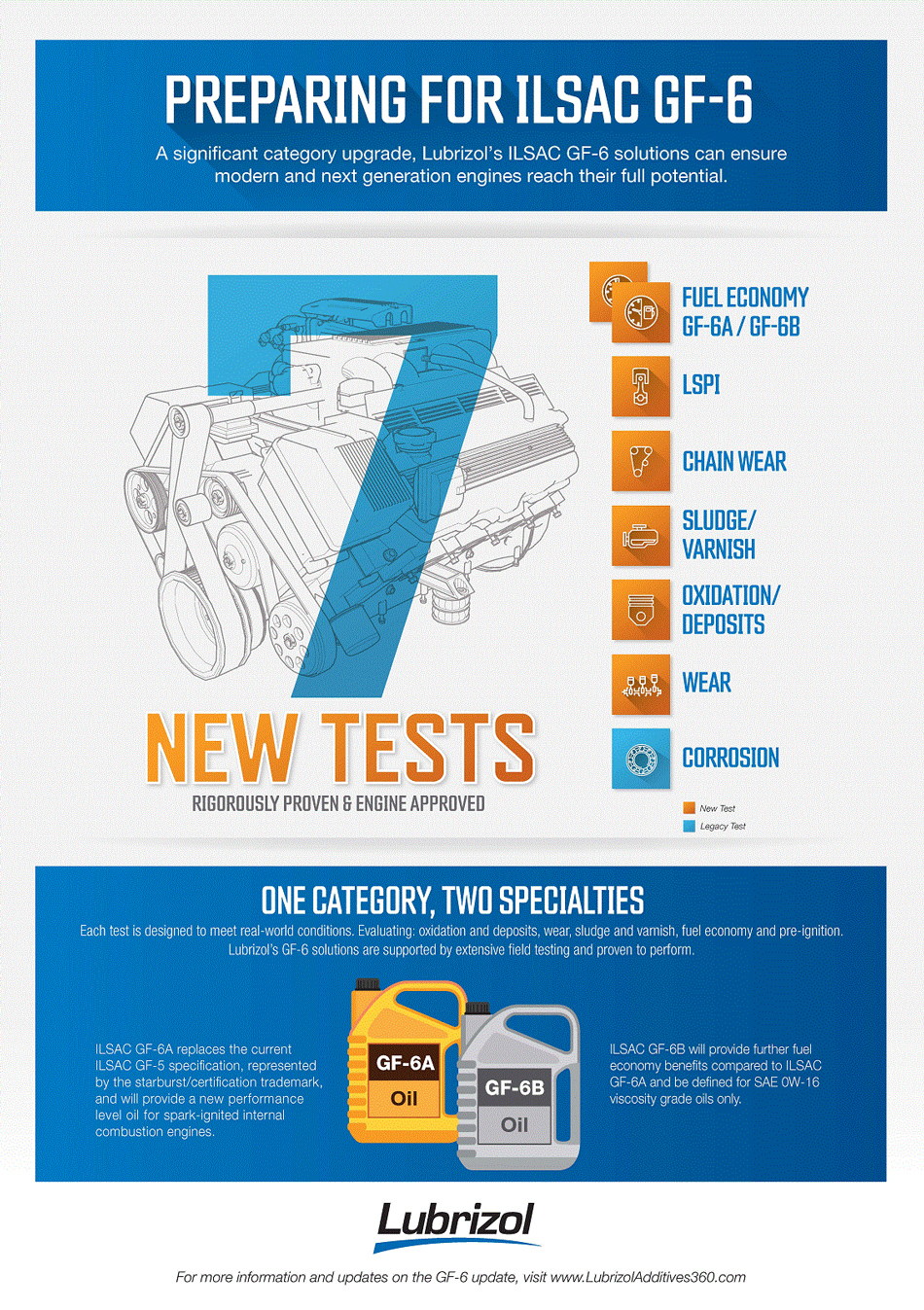ILSAC GF-6 Engine Tests
Seven New Engine Tests Created
The proposed GF-6 specification is bringing an unprecedented number of new tests. Here’s what you should know about each new test.
- Each of the new tests is based upon the needs of modern, high-tech engines and what is required of lubricants to enable them.
- The new tests address the increasingly limited availability of the engines used to run GF-5 tests.

Click here for a printer-friendly version of the ILSAC GF-6 infographic.
The addition of seven new tests reflect the challenging and severe nature of the proposed GF-6 specification upgrade. Lubrizol is heavily invested in this category upgrade, assisting in the development of the new tests and installing the new registered test stands at its facilities. This is enabling Lubrizol to be at the forefront of GF-6 product development, formulation and testing to deliver the optimal products to our customers.
Below is a breakdown of what each test accomplishes in the new ILSAC GF-6:
Sequence IX (Low-speed Pre-ignition Test)
What does the test accomplish? Measures performance and protection against low-speed pre-ignition for turbocharged direct injection gasoline-powered vehicles
Sequence X Test (Chain-wear Test)
What does the test accomplish? Measures a lubricant’s ability to minimize timing chain wear as it relates to the soot-like material particles produced by GDI engines.
Sequence IIIH (Oxidation and Deposit Test)
What does the test accomplish? Evaluates oxidation and thickening in a lubricant by running the test at an elevated temperature, which stimulates the potential for both oxidative thickening and deposit formation.
Sequence IVB Test (Cam/Wear Test)
What does the test accomplish? Evaluates a lubricant’s ability to prevent wear on the cam load throughout multiple locations on an engine. The new test involves repetitive and continuous testing at varying operating speeds.
Sequence VH Test (Sludge and Varnish Test)
What does the test accomplish? Evaluates a lubricant’s ability to prevent engine deposit buildup, or “sludge and varnish” as it’s commonly referred to. This test sets more stringent limits for deposit buildup; however, the engine technology of the replacement engine effectively remains the same. One major point of differentiation between the two engines is each engine’s control unit; the new engine utilizes a significantly more modern computer system.
Sequence VIE Test (Fuel Economy Test)
What does the test accomplish? Evaluates a lubricant for its effects on fuel economy, one of the driving factors in the proposed GF-6 specification and the industry at large. This test would correspond to ILSAC GF-6A.
Sequence VIF (Fuel Economy Test)
What does the test accomplish? Uses the same hardware as the Sequence VIE; however, the test conditions have been modified to measure fuel economy for viscosity grades of SAE 0W-16 that would correspond to ILSAC GF-6B.
Sequence VIII (Corrosion Test)
What does this test accomplish? Continues to measure bear weight loss and 10-hour stripped viscosity. This remains important since bear weight loss can occur when additive components are acidic in nature (i.e. some friction modifiers).
Get news and insights on ILSAC and the GF-6 specification.
For a deeper dive into specifications, see the Lubrizol Ready Reference Guide, the industry's go-to resource for understanding fuel and lubricant performance principles and requirements.